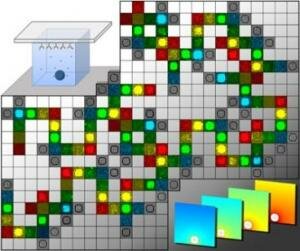Better Way to Detect Food Allergies
About 30 percent of Americans believe they have food allergies. However, the actual number is far smaller, closer to 5 percent, according to a recent study commissioned by the National Institute of Allergy and Infectious Diseases.
That's due in large part to the unreliability of the skin test that doctors commonly use to test for food allergies.
MIT chemical engineer Christopher Love believes he has a better way to diagnose such allergies. His new technology, described in the June 7 issue of the journal Lab on a Chip, can analyze individual immune cells taken from patients, allowing for precise measurement of the cells' response to allergens such as milk and peanuts.
Using this technology, doctors could one day diagnose food allergies with a simple blood test that would be faster and more reliable than current tests, says Love, an assistant professor of chemical engineering. "With a large number of diagnoses, it's ambiguous," he says. "A lot of times it's almost circumstantial whether you're allergic to one thing or another."
Measuring single cells
The NIAID study, published May 12 in the Journal of the American Medical Association, found that in the United States, 6 to 8 percent of children under four, and 4 percent of people five or older, have at least one food allergy. Milk, peanuts, eggs and soy are among the most common allergens.
Food allergies occur when the body's immune system mistakes a protein in food for something harmful. This triggers an allergic response that can include rashes, hives, difficulty breathing or gastrointestinal distress. Some allergies can provoke life-threatening anaphylactic shock, which requires immediate treatment.
Patients suspected of having food allergies usually undergo a skin test, which involves placing small quantities of potential allergens under the skin of the patient's arm. If the patient's blood has antibodies specific to that allergen, immune cells will release histamines that cause itching and redness in the spot where the allergen was placed.

"In this image, each block represents a single cell. Each cell's type can be distinguished, and its cytokine secretion can be measured. (The image is a composite of actual data and computational models.) (Credit: Qing Han and Christopher Love)"
Source: Massachusetts Institute of Technology
|